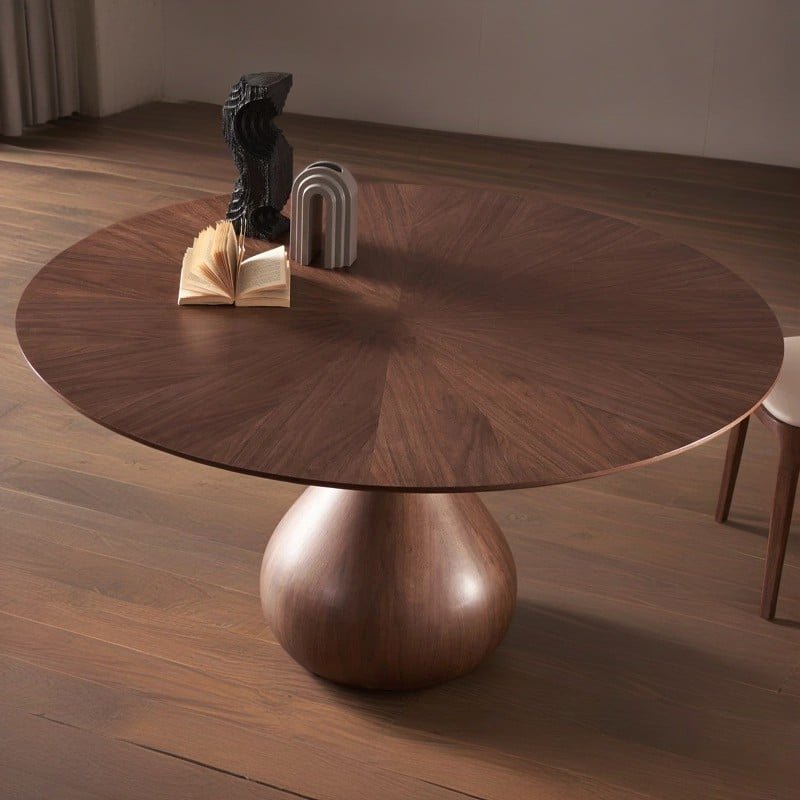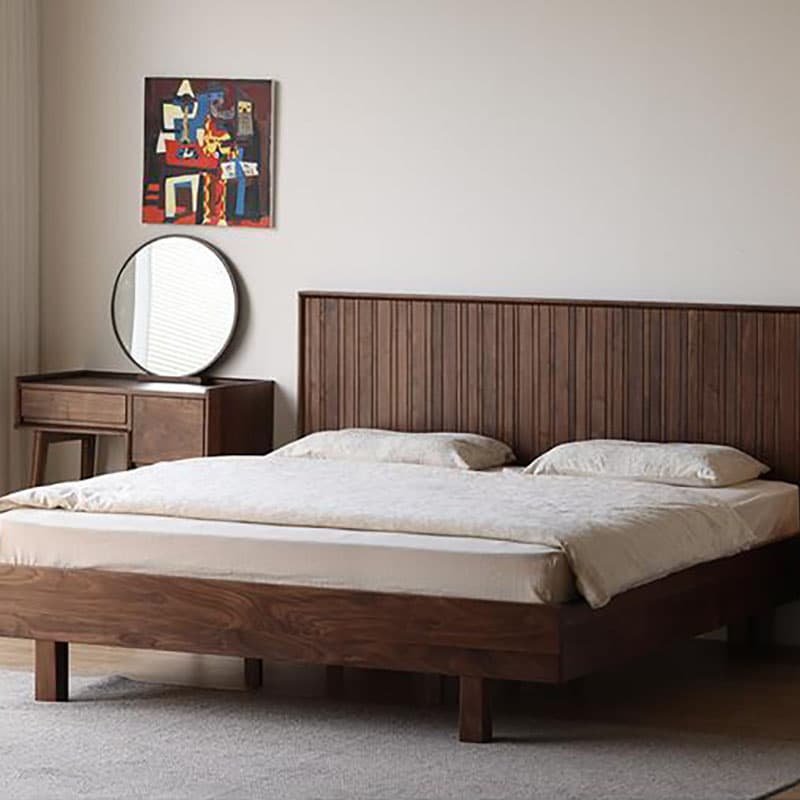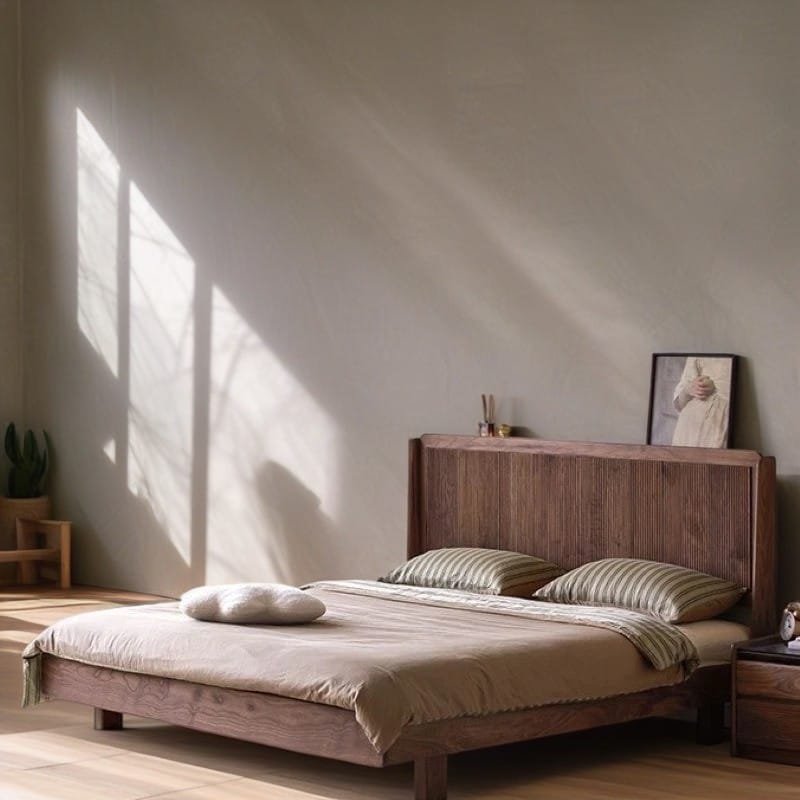In the complex furniture market, choosing a piece of wooden furniture that can truly stand the test of time requires a pair of keen eyes and clear judgment standards. Here is a practical guide to help you find the thing you like with both aesthetic and inheritance:
- Understand the nature of wood
Recognize common types:
Hardwood: oak, walnut, cherry, maple, teak, etc. High density, rich texture, wear-resistant and durable, and has a strong sense of value.
Cork: pine, fir, rubber wood, etc. The texture is soft, the texture is relatively simple, and the price is affordable. Pay attention to the surface hardness.
Key quality indicators:
Solid wood content: pursues the same type or high-quality wood as the frame, panel, and load-bearing structure. Be wary of products with “solid wood frame + artificial board veneer” or only a small number of solid wood parts.
Wood grade: Pay attention to the quality of the wood itself:
Flaws: The fewer natural defects such as scars, mineral lines, cracks, etc., the higher the grade.
Texture and Color: High-quality wood has clear and smooth texture and uniform color (except for special designs). Avoid large areas of color aberration or blurred textures.
Moisture content: The moisture content of the wood treated in place should be adapted to the local climate (usually in the range of 8%-12%) to ensure stability and reduce the risk of deformation and cracking.
- Observe the details of the craftsmanship
Structural stability:
Connection method: Traditional mortise and tenon structures (such as dovetails and wedges) are the hallmarks of top-level craftsmanship, tightly combined and durable. Check whether modern hardware (screws, bolts) are firm and smooth, and whether the material is thick (such as thick steel or brass).
Overall firmness: gently shake the furniture, feel solid and no abnormal noise. Is the drawer smoothly and has no lag, and is it tightly tactile when closed? Are the cabinet doors smooth and aligned?
Surface treatment:
Touch: The treatment of high-quality paint or wood wax oil should be smooth and delicate, without particles, bubbles, or sagging. The wood texture should be clearly visible (open or semi-open coating).
Color uniformity: Check whether the color is uniform, especially at the joints of different parts and at different lighting angles.
Neck treatment: All corners should be polished round and smooth, without burrs and sharp.

- Design considerations and practicality
Scale and line:
Visual harmony: The overall proportion of furniture should be coordinated and the lines should be smooth and beautiful (whether modern and simple or classical carving).
Functional priority: Design serves functions. Is the chair comfortable to sit? Is the table height appropriate? Is the storage space reasonable?
Size Match:
Accurately measure the placement space (length, width and height), ensure the matching of furniture sizes, and reserve activity channels. Large furniture should consider the entrance path (door, corridor, staircase).
Unified style:
Consider the coordination between new furniture and existing home styles (modern, Chinese, Nordic, industrial, etc.) to avoid abruptness.
- Purchase decision-making process
Field visit:
See and touch with your own eyes: Pictures cannot replace physical experience. Carefully observe the wood texture, color, and workmanship details, and test the stability and smoothness of opening and closing by yourself.
Smell the smell: High-quality wooden furniture should have a natural wood fragrance or a very light environmentally friendly lacquer smell. A pungent odor can mean inferior coatings or adhesives.
In-depth communication:
Material confirmation: Please clearly ask whether the specific wood types of main and auxiliary materials (such as “oak” and “walnut”, rather than general “solid wood”) are all solid wood? What are the materials of the frame, panel and back panel?
Process inquiry: Understand the structural method (mountung or hardware?), surface treatment process (coating type?), and wood drying treatment.
Warranty and after-sales service: Understand the scope of warranty (structure, cracking, hardware, etc.), duration and after-sales service content.
Value trade-off:
Quality comes first: High-quality wooden furniture is a long-term investment and should not simply pursue low prices. Pay attention to the long-term value brought by materials, craftsmanship and design.
Rational comparison: Compare the rationality of prices under similar materials, craftsmanship and design levels.

- Avoid common misunderstandings
“Solid Wood” Trap: Beware of “solid wood furniture” where only the frame or a small number of parts are solid wood. Ask what parts “solid wood” specifically refers to.
Leather camouflage: Pay attention to whether the wood grain is continuous and natural (especially at corners and edges), and check whether the end face (cross section) is a real wood texture.
Over-staining masking: Dark or uniform and flawless surfaces may be used to mask low-grade wood or imperfections. Requires viewing of untreated wood samples or internal structures.
Fancy and unreal: If complex carving or decoration is rough, it will expose shortcomings. Pay attention to the details.
- Cherish and maintain
Gentle cleaning: Wipe with a soft and slightly damp cloth and dry it in time. Avoid strong acid and alkali cleaners.
Stay away from extreme environments: Avoid long-term direct sunlight, close to heat sources (heating, fireplaces), and humid environments (such as bathrooms). Keep indoor humidity relatively stable.
Protection against use: Use coasters and placemats on the desktop to prevent scalding and water stains. Regularly (half a year to one year) use special wood wax oil or furniture care products for maintenance.
True wooden furniture is a container of time and a witness to life. Every time you touch the warmth of the texture and every time you open and close the drawer, it is a silent and ingenious statement. Choosing it not only adds an object to the space, but also anchors a inheritable temperature for life. This texture that can withstand the scrutiny of time will silently repay your vision and attention in every detail of daily use.


